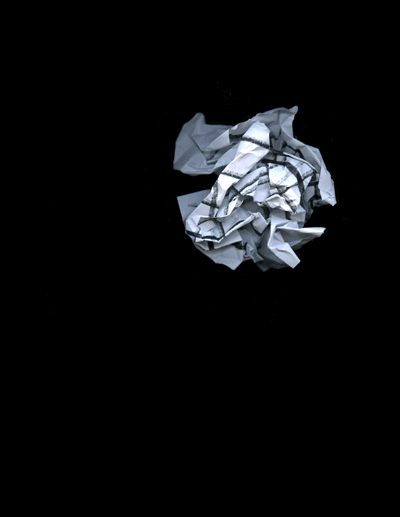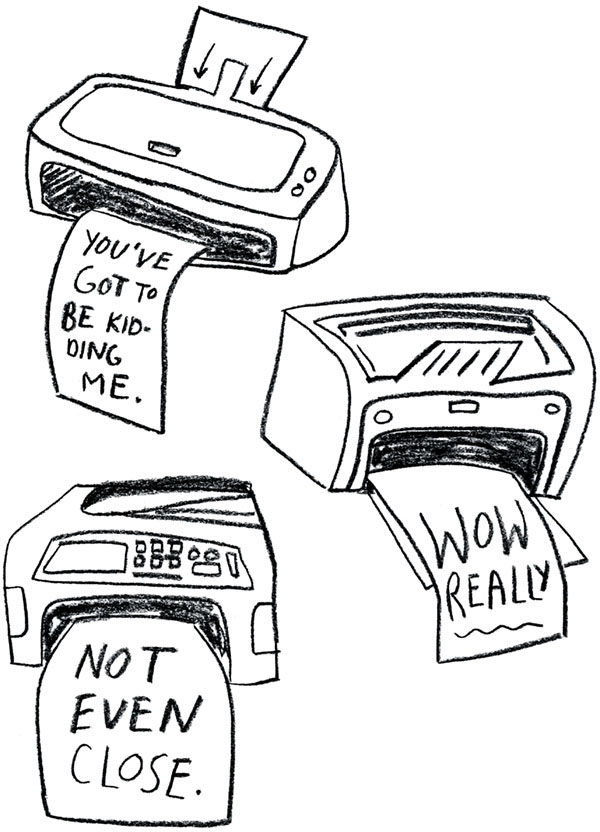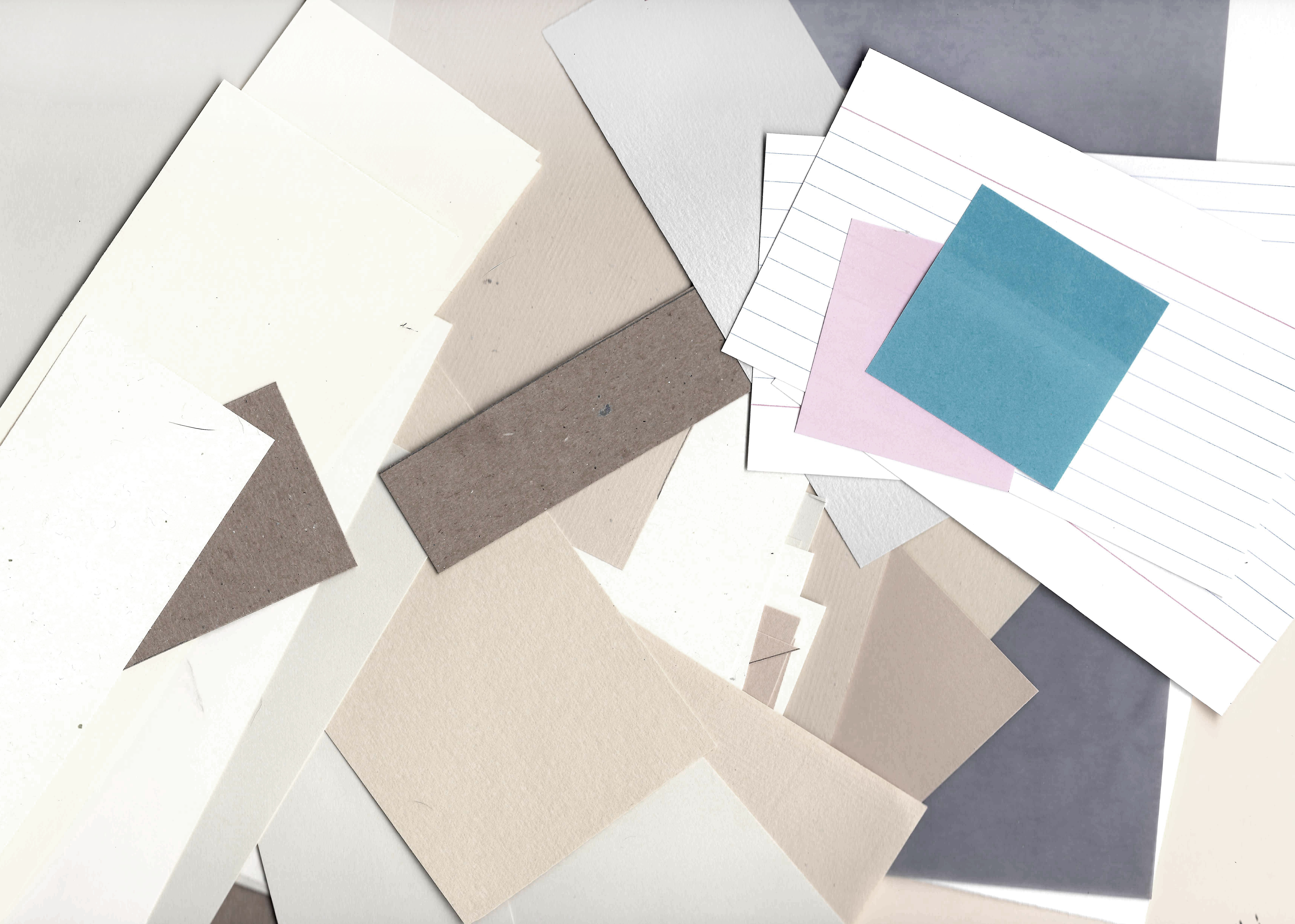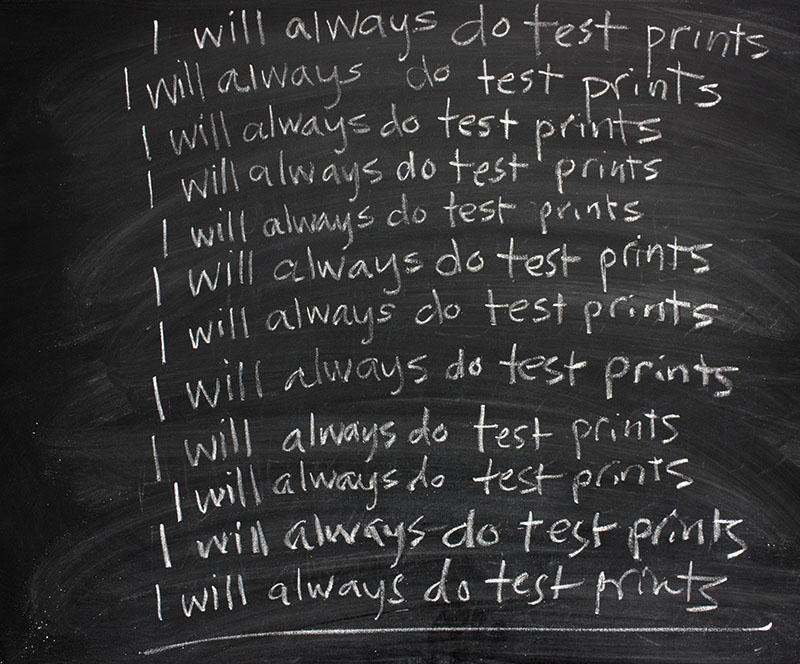
To tell you the truth, after six years of being a design student, I still have trouble getting things to print right. But I have a feeling that people in the real world are aware of this struggle—and that’s why design professionals leave it up to printing professionals to print things. Interesting, huh? Unfortunately, as design students we rarely have that luxury.

Over the years, some things have printed wonderfully for me on the first try, and other things have failed miserably after several hours and piles of ruined paper later. I can’t even tell you how many times I’ve printed things that didn’t turn out right.
What’s the secret to printing things anyway? Plain and simple: you have to choose the right paper for the design, and then the right printer for the paper.
It all depends on the thickness and texture of paper, versus the amount of ink on the paper. My favorite things to print are text on paper. My least favorite things to print are photographs. In fact, can someone please tell me what paper to print on for my brand book that has all these photos and some place to print it where the photos won’t look washed out or grainy or too soft?

"Pro" Printing Tips:
1.
If you don’t have your own printer, always bring your computer with you to the printer. You can easily make minor changes inside your working file and then re-save your PDF’s for printing.
2.
Print multiple final copies—especially if you’re cutting things by hand. You may eventually cut something wrong and be so thankful to know that you already planned ahead for this.
3.
Don’t be afraid of fancy printing methods.1 It might be your one chance to have something in your portfolio, on paper, that is actually bad-ass.
4.
Don’t just wing it. If you don’t have control over the printing process, your chances of it turning out well aren’t very high. Sometimes it’s better to do something simple that you have complete control over than doing something complicated that takes too long to get right. Use your best judgment.
5.
Choose paper wisely.2 It’s important and fun! Be picky. Go with what feels good, and what you particularly like. Don’t leave it up to some default. You are choosing your printing method based on the paper you’ve chosen—and you are choosing your paper based on what best fits your project both visually and conceptually.
In addition to choosing paper wisely, you should also experiment with paper. To do this, it helps to start your own paper collection.

LEFT
My personal collection of paper has grown a lot over the years—and it's definitely come in handy a number of times. You never know when you might need some cream-colored linen paper, light pink construction paper or purple vellum.
6.
If your colors don’t look right, it’s your printer. If it’s not your printer, it’s your paper. If it’s not your paper, it’s your computer. If it’s not your computer, it’s your eyes.
7.
Always do test prints.

8.
When something does print right, take note of what you did differently and why it worked well.
9.
Know when to go with a professional.
10.
Consider buying a printer.3 Having your own printer to work with at 3 am is a lifesaver and allows you to experiment, which probably results in better work. It also allows you to get good prints because you’ll become familiar with the paper your printer needs. You will always have a need for your printer as long as you’re in school.
Questions to ask yourself when choosing paper:
1.Which paper is going to help the visuals stand out? (i.e.; textured, smooth, glossy, matte, etc.)
2.Which paper is going to best support the piece conceptually? (i.e.; hot-pink linen, brown butcher, off-white laid, etc.)
3.What size does the paper need to be? Remember to always design for the paper size.
4.How much ink does the piece require? (i.e.; photos require more ink than paragraphs of text)
5.What printer do I need to use in order to get the best results?